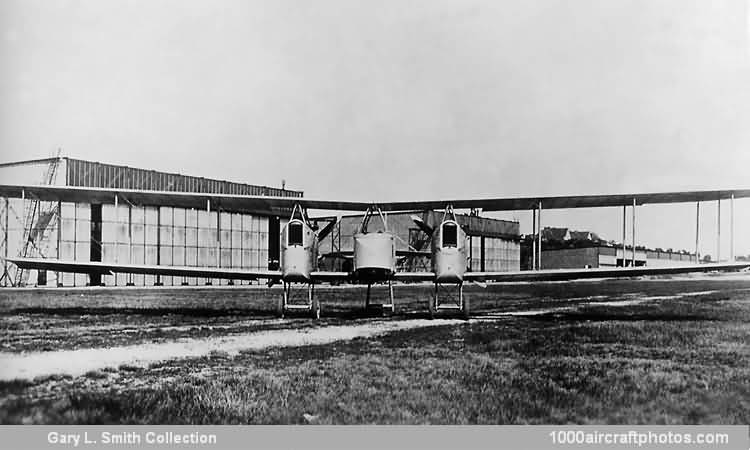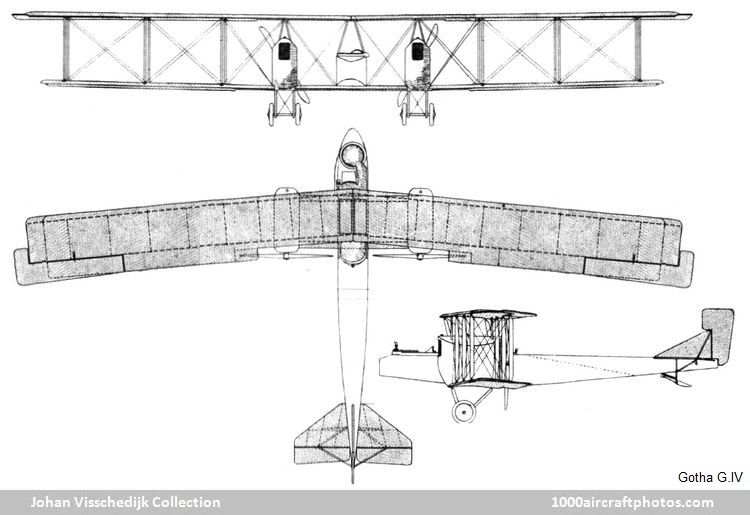02/28/2009. Remarks by Kees Kort: "The Gotha G.II to G.V bomber series was designed by chief engineer Hans Burkhard of the Gothaer Waggonfabrik AG, Abteilung Flugzeugbau (Gotha Railcar Factory, Aircraft Section) at Gotha, Germany. The G.II appeared in 1916, culminating in the G.V of 1917-1918. The G.IV is pictured in front of the factory buildings on the day of the roll-out.
The front-view gives exact information to distinguish this machine as a Gotha G.IV. The two 260 hp Daimler D IVa engines were built in large nacelles, resting fully on the wing, where the G.V had the engines in smaller boxes between the wings. As indicated by the connection rod, the G.IV had ailerons on the upper and lower wing, while the forerunners G.II and G.III had ailerons only on the top wing.
The normal crew consisted of a pilot, a bombardier/front gunner, and a rear gunner. The most famous feature of the G.IV, also used in the later G.V, was the 'Gotha tunnel'. Experience gained with the G.III showed that the rear gunner could not efficiently operate both the dorsal and ventral positions. The solution was this "Gotha tunnel", a trough connecting an aperture in the upper decking with a large opening extending across the bottom of the rear fuselage, allowing the gunner at the dorsal position to depress his gun into the aperture and fire through the fuselage at targets below and behind the bomber. A ventral machine gun could still be mounted.
In November 1916, Gotha received a order for 35 production aircraft; this was subsequently increased to 50 in February 1917. A further 80 aircraft were ordered from the Siemens-Schuckert Werke (SSW) and 100 from LVG (Luft-Verkehrsgesellschaft, Air Transport Company). These license-built aircraft were slightly heavier and slower than the Gotha aircraft because the Idflieg specified the use of a strengthened airframe.
On August 18, 1917, returning from an attack on England, Gotha G.IV (s/n 1055/16) landed on Dutch soil, near Beerta, Groningen, only a few miles from the German border. The three crew were interned, while the machine was impressed in the LA (Luchtvaart Afdeling, Air Service) of the Netherlands Army, serialed LA 50.
On its first Dutch flight by the lieutenants van Heyst, Bannink and van de Abeelen, it was damaged in the hard landing following an engine failure during take off. Repairs followed and the machine remained in Dutch service till 1921, being reserialed G700 in early 1918. Most likely it was the last intact Gotha bomber remaining."

